High-performance glass
The solution to solar control and thermal insulation needs
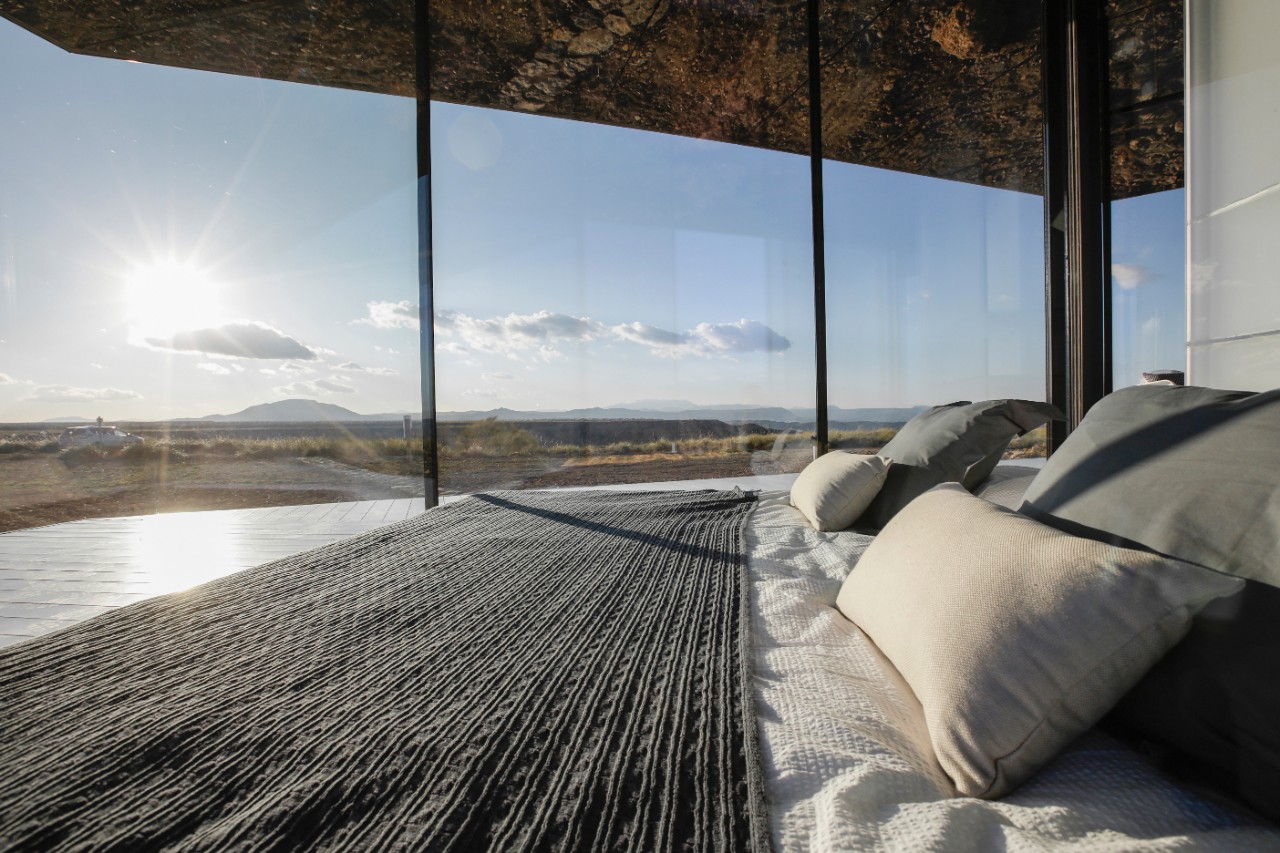
High-performance glass provides natural light transmission while helping to limit heat gain and thermal energy transfer.
Due to continuous improvements in its thermal insulation and solar control performance, glass is a flexible building material that can help improve the energy efficiency of buildings. One way this performance can be achieved is through the use of high-performance coated glass, a critical part of the glazing, which enable building occupants to visually engage with the external environment from a comfortable interior.
- What is high-performance glass and why do we use it?
- What are the benefits of high-performance glass?
- How does high-performance glass work?
- Thermal insulating performance of high-performance glass
- Solar energy and its interaction with glass
- High-performance coating types and manufacturing processes
- Applications and uses of high-performance glass
What is high-performance glass and why do we use it?
High-performance glass in architectural glazing can help control temperatures inside a building by providing varying levels of thermal insulation and/or solar control. High-performance glazing can allow plenty of natural light into interior spaces, helping to improve occupant comfort while contributing to the energy efficiency of the building.
Higgh-performance glass coatings also offer architects a wide range of aesthetic options in terms of colors, allowing them to select the most appropriate look to suit their project.
What are the benefits of high-performance glass?
High-performance coatings offer a range of contributions to architectural glazing.
In terms of aesthetics, the glazing can be made to look neutral or colored, with the desired level of reflection, light transmission and privacy. Architects have the freedom to create visually stunning glazed facades that help integrate the building with its environment by reflecting the surroundings or by showing what’s happening inside a building. In terms of energy performance, the routing of solar energy and the intensity of thermal insulation are impacted. High-performance coatings can help meet green building programs, suche as the U.S. Green Building Council's LEED® program, and other energy code requirements.
Thermal insulation
In terms of its thermal insulation performance, high-performance glass offers the following benefits:
- Can allow the sun’s rays to pass through the glass when desired.
- Helps reflect indoor heat back into the room.
- Can form a shield against the cold exterior.
- Generally used in double or triple glazing.
- Can help to reduce energy costs associated with indoor heating systems.
Solar control: high-performance glazing lets the light in
Often specified for windows, roofs and glazed facades, solar control glass help optimize light transmission, solar control and thermal performance. The glass lets sunlight pass through while reflecting a large proportion of the sun’s heat.
Solar control high-performance glass is ideal for maximizing natural daylight and reflecting the most solar heat back to its source. The indoor space remains bright and cooler compared to uncoated glass. Energy efficiency can also be improved as solar control glass helps reduce air conditioning loads during warmer months.
Spectral selectivity
Light coming inside the building, as well as coatings and their placement in the glazing, are crucial to support occupant comfort. The term “spectral selectivity” is used to address the amount of daylight transmission relative to solar energy blockage. Spectral selectivity is calculated by dividing the visible light transmission (VLT) by the solar factor or SHGC (Solar Heat Gain Coefficient). Greater spectral selectivity is achieved when more visible light, and less overall solar energy, are transmitted.
Helping to reduce destructive UV rays and glare
Depending on the location and orientation of the building, high-performance glazing can help mitigate glare from the sun and increase the visual comfort of building occupants, particularly if a glazed façade is directly exposed to the sun and with a high window-to-wall ratio.
Ultraviolet (UV) light can be attributed to approximately 50% of interior furnishing and fittings fading. Using laminated glass can block up to 99% of UV light.
Our high-performance glass products:
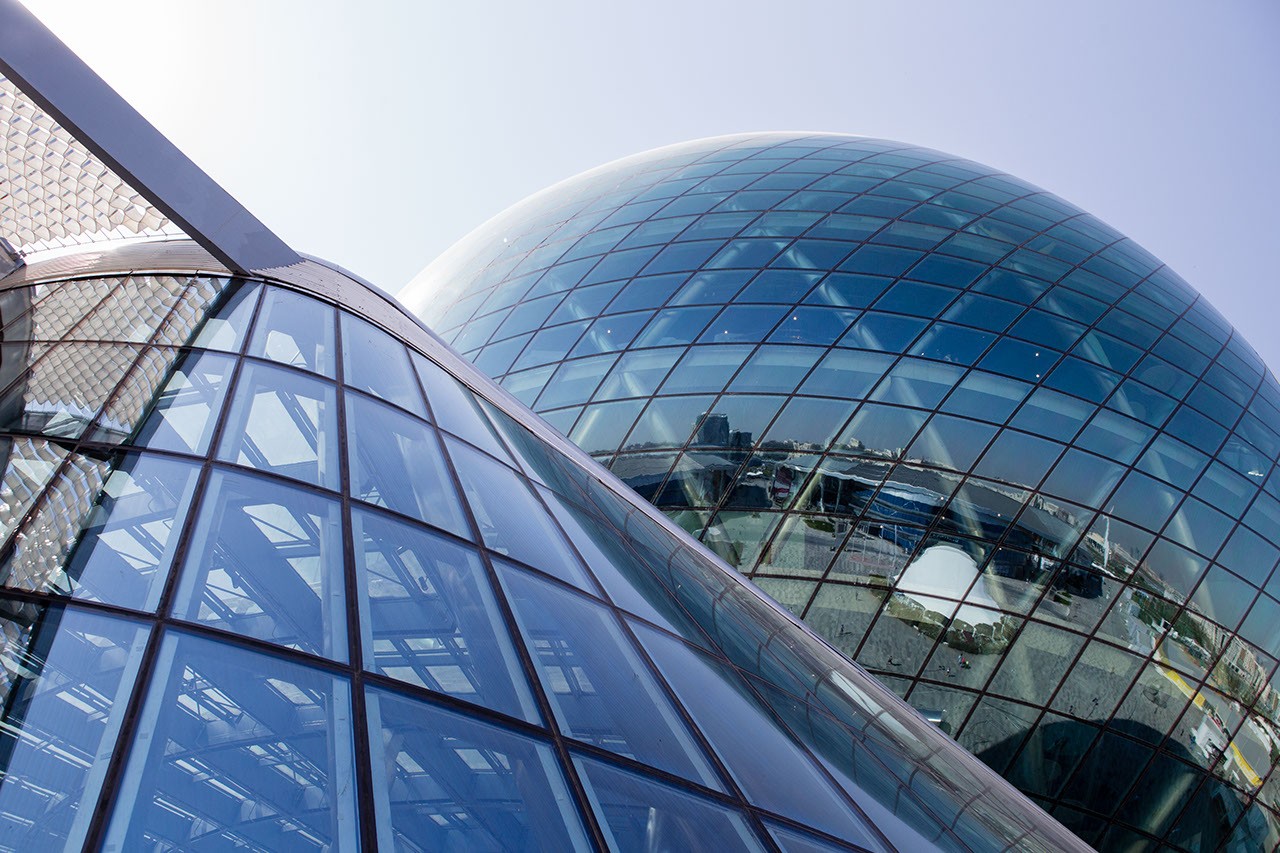
Our range of high-perofmance products combine solar control, light transmission and low solar heat gain properties with a range of color and appearances to help accommodate any application.
How does high-performance glass work?
In order to understand how high-performance glass works, it is necessary to consider how glass interacts with the electromagnetic spectrum.
Solar energy (or shortwave radiation) is received at the surface of the earth from the sun. It includes ultraviolet, visible, and near-infrared wavelengths – together ranging from 300 to 2,500 nm. Solar control coated glass can block a significant amount of this energy by reflecting and absorbing part of it.
Longwave radiation includes wavelengths from 5,000 to 50,000 nm. High-perormance coatings on glass are designed to slow radiant heat transfer. High-performance coatings reflect longwave radiation (heat) back into the structure during cooler periods.
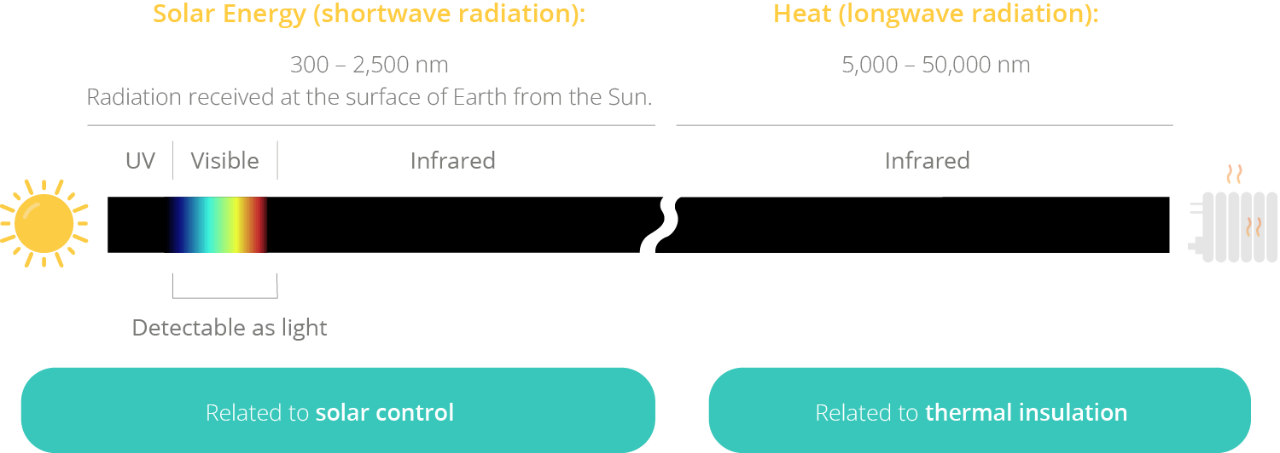
Thermal insulating performance of high-performance glass
Heat transfer takes place through three mechanisms: radiation, conduction and convection. All three types of heat transfer take place within an insulating glass unit (IGU).
- Radiation is heat transfer by electromagnetic energy, where longwave energy moves through the glazing assembly.
- Conduction is the heat transfer within a medium (solid or gas) caused by temperature differences. This transfer is reduced by using argon inside the IGU because of its lower thermal conductivity compared to air. Along the edge of the IGU, conductive heat moves from glass to spacer and back to glass. This transfer can be slowed by using a warm edge spacer.
- Convection is heat transfer through currents of slowly moving air or gas within the IGU.
Insulating performance refers to the reduction of heat transfer associated with exterior-versus-interior air temperature differences.
Cold climates
In cold climates, insulating performance is a benefit. Thermal insulation glass can allow incoming shortwave energy to enter and improves the retention of heat inside of the building, with longwave energy reflected.
In warm climates, the glazing should reduce both incoming shortwave energy, as well as incidental incoming longwave energy, which can help lessen the need for air conditioning.
Regardless of the climate, a glazing that lowers heat transfer is a benefit for energy performance.
The insulating performance of glazing can be improved with the use of a high-performance coating that performs well in reflecting longwave energy. This performance can also be improved by adding another pane of glass to the IGU so that multiple cavities and coated surfaces can contribute to insulating performance.
How is insulating performance measured?
Insulating performance is measured using a parameter called the “U-value”, which describes energy transfer per unit time, i.e. the duration required for energy transfer per unit of glazing area and per degree of temperature difference between the exterior and interior conditions.
If a glazing assembly has strong thermal insulating performance, only a small amount of energy will be transferred and so the U-value will be low.
Solar energy and its interaction with glass
When a ray of electromagnetic energy strikes a glass pane, some of the energy may be reflected, some may be absorbed and any remaining energy will be transmitted.
How is solar heat gain measured?
The solar factor (g-value) and solar heat gain coefficient (SHGC) are used to measure the solar energy that transfers indoors. This includes direct transmission and indirect transmission because of absorption and inward re-radiation. The Solar Factor, or the SHGC, is the decimal share of the solar energy that is transmitted through a glazing composition. For example, if 31% of the incoming solar energy passes through the glazing, the g-value or SHGC is 0.31 (31%).
Hot climates
For a building project located in a warm or moderate climate, a low g-value or SHGC is preferred. The number 2 surface placement of a solar control high-performance coating often facilitates the best performance because it reflects away part of the incoming solar energy before it can enter the glazing.
In particularly cold climates, a higher g-value or SHGC could be beneficial to allow passive heat gain.
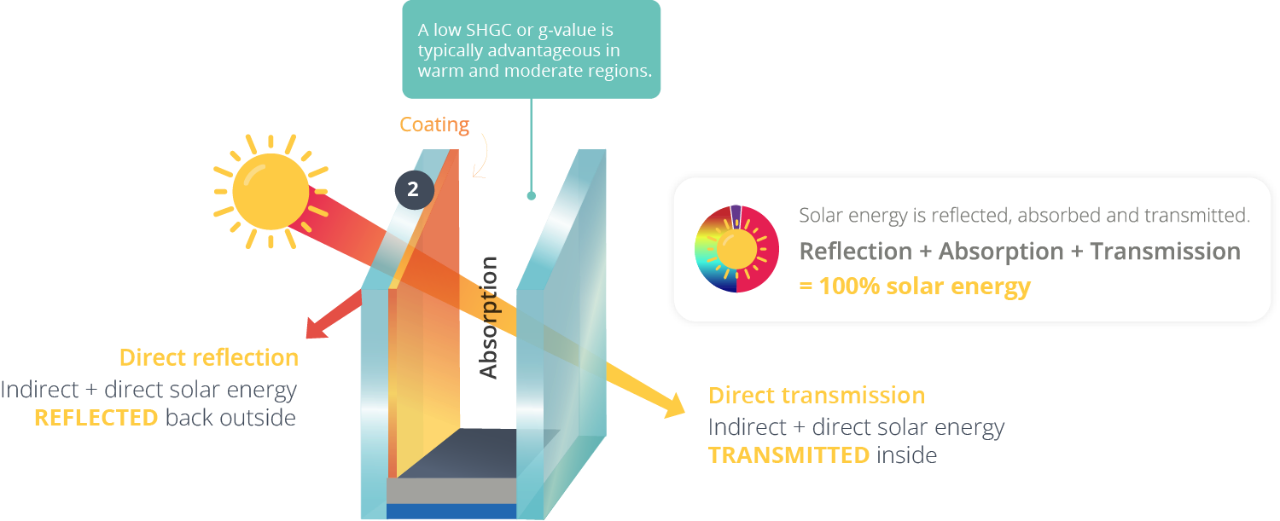
High-performance coating types and manufacturing processes
High-performance coatings can be divided into two categories: those that are applied through pyrolytic deposition (hard coatings), and those applied through sputter deposition (soft coatings). Guardian Glass production plants only use the sputter deposition process.
Sputter coatings
Sputter coatings are applied in a large magnetron sputter vacuum deposition machine, offline from the float glass production process. The fully formed glass travels along a conveyor system through a long vacuum chamber where a range of materials are sequentially accumulated on the glass surface. Together these materials measure approximately 1/500th of the thickness of a sheet of paper.
Sputter coatings are applied with more precision than pyrolytic coatings. Current sputter-coated high-performance coatings are multilayered complex designs engineered to provide high visible light transmission, low visible light reflection and reduce heat transfer.
Pyrolytic coatings
Pyrolytic coatings are applied online during the float glass production process. The upper surface of the glass ribbon is sprayed with material, typically tin oxide. As the glass cools, the surface bond solidifies, creating a strong bond that is very durable for glass processing during fabrication. However, their properties are very limited due to their simple structure.
How is high-performance glass coated? See the sputter coating process in this video animation.
The influence of silver
Depending on the performance requirement of the coating, as many as 15 layers may be needed to achieve the desired performance.
Of the materials that comprise a sputter low-E coating, silver is the most influential in enhancing energy performance. As more silver layers are added to the composition of the coating, the better the spectral selectivity of the glass will be.
Want to know more about coated glass?
Applications and uses of high-performance glass
The applications for architectural high-performance glazing are wide ranging. From windows and curtain walls to roofs and skylights, in fact, any application where glazing is a physical barrier between the inside and outside of a building, high-performance glazing can be considered.
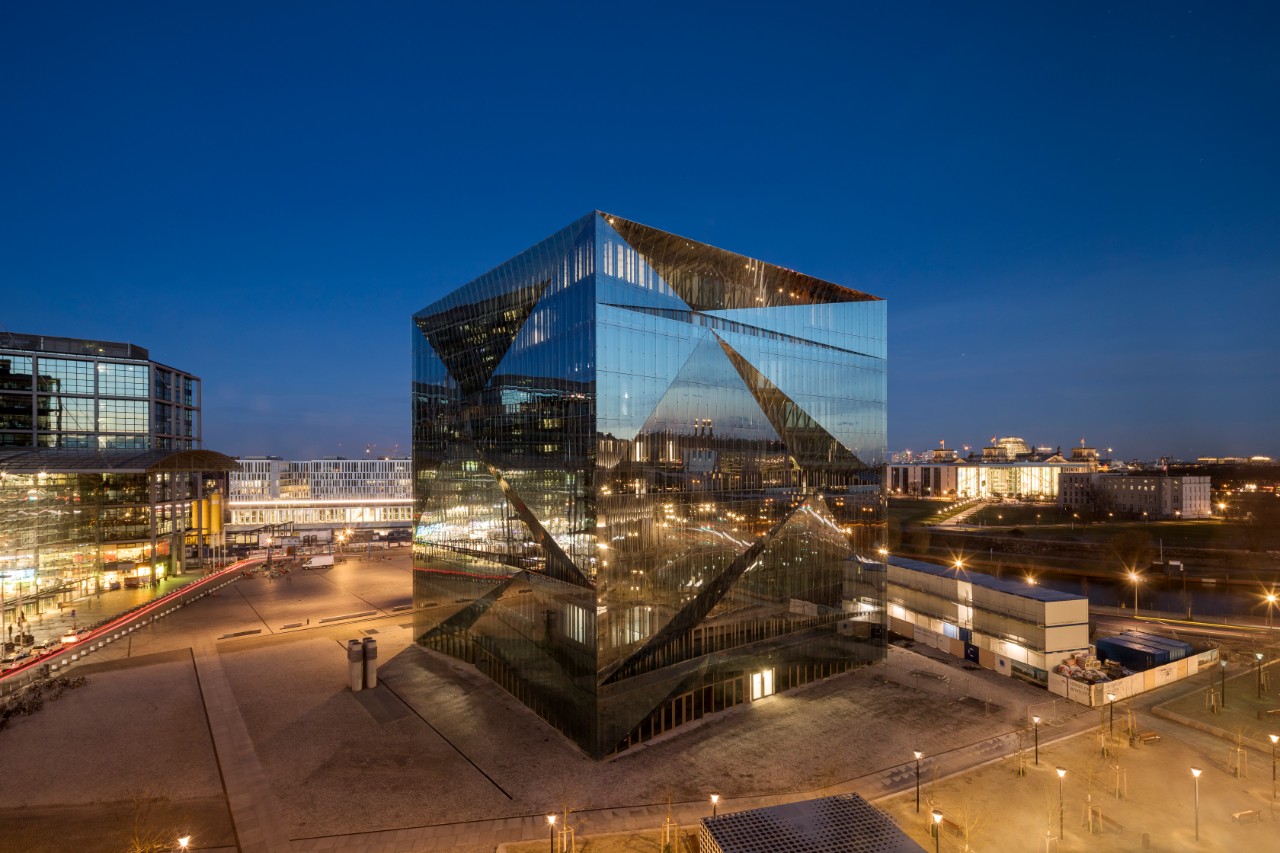
Curtain walls
A curtain wall is a non-structural outer covering of a building that can be made of glass. Using low-E coated glass in a curtain wall helps designers to control the appearance (e.g. reflectivity, transparency, color) and performance of the glazing, including thermal insulation and solar protection.
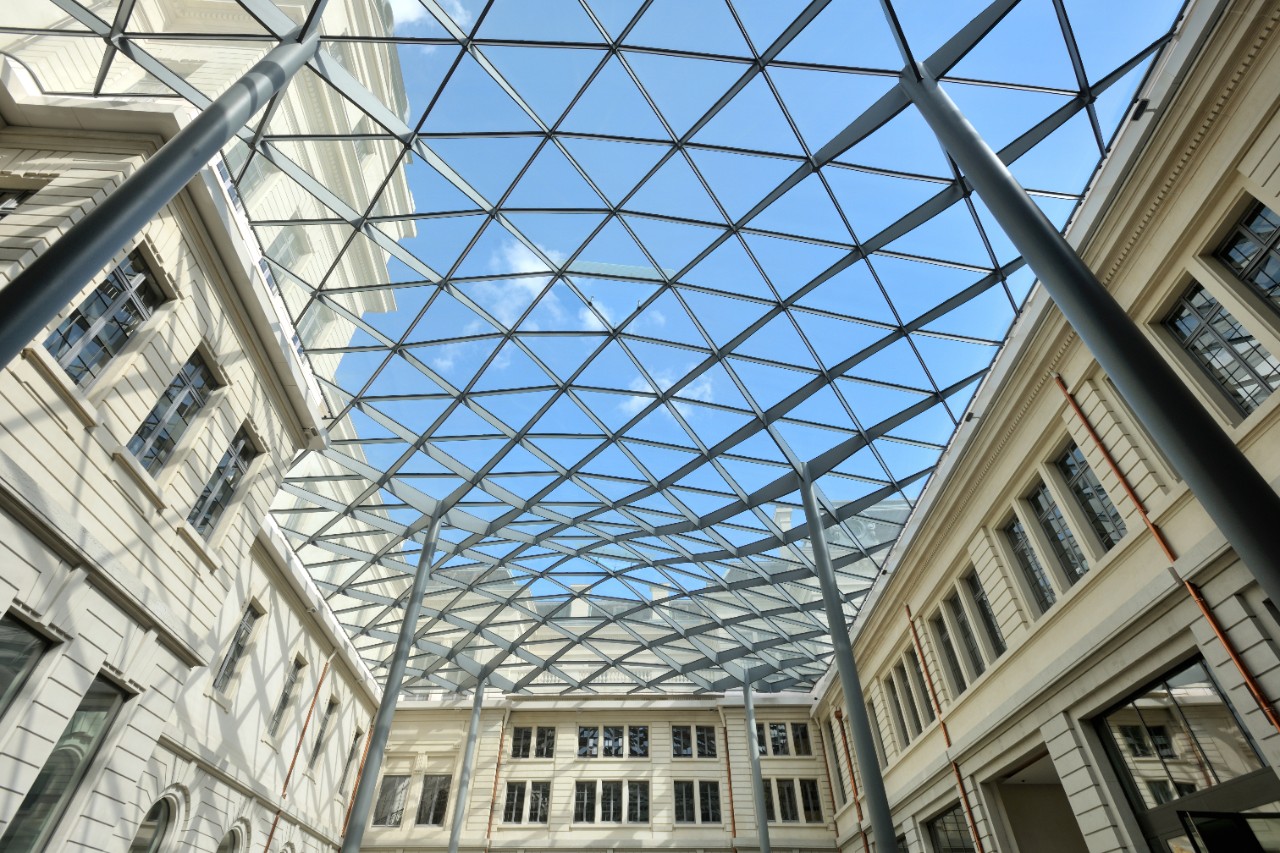
Roofs and skylights
Overhead glazing such as roof glazing can help reduce the need for artificial lighting, as well as provide a natural source of daylight to help brighten and open up the interior spaces of a building. Low-E coatings in the glazing can help address thermal insulation and solar control needs. Low-E glass can even be laminated for use in overhead safety glass applications.
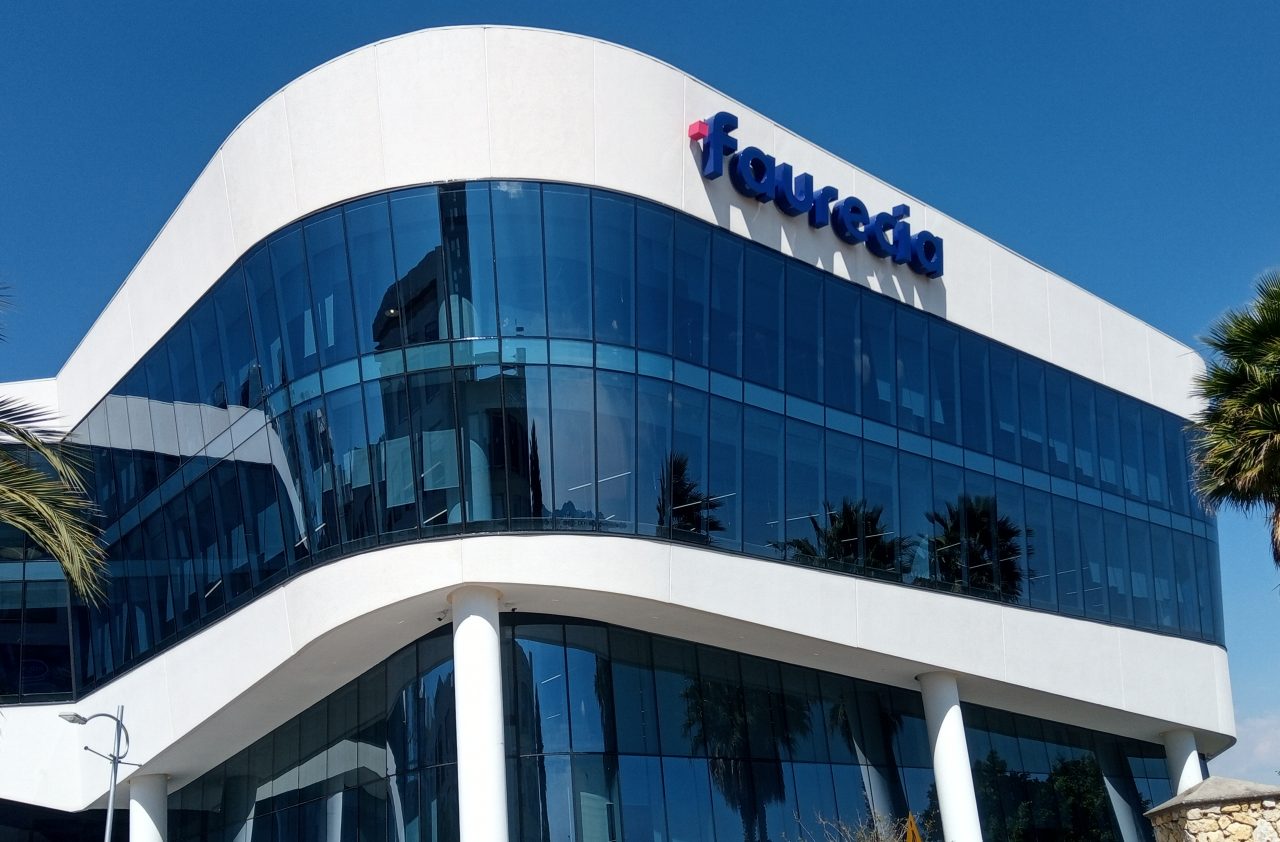
Curved glazing
In curved or bent glazing, low-E coatings have been developed that withstand the bending process without affecting the visual appearance of the glass. Low-E coatings are available for curved glass applications that still provide the required thermal and solar performance to contribute to the energy efficiency of the building.
Some of our projects made possible with high-performance glass:
Want to see more architectural projects made with low emissivity glass? Visit our project section.
Why choose Guardian Glass?
Guardian Glass are experts in the creation and application of glass – constantly developing new glass technologies and techniques to deliver high performance glass solutions all around the world. We’re focused on expanding the boundaries of what can be achieved with glass. From landmark architectural projects to home interiors and retail spaces. This means we work hand in hand with our partners and customers across the supply chain to ensure exactly the right outcome. In other words, when it comes to glass, we help you see what’s possible.
Our high-performance glass products
Need to compare the performance of our products? Visit our product section to search, compare and filter through our wide range of glass solutions.
-

SunGuard® eXtraSelective
SunGuard® eXtraSelective is a high-performance, triple-silver solar control glass offering an ideal balance of natural light and solar energy control.
See more -

SunGuard® SuperNeutral
SunGuard™ SuperNeutral™ is double, silver-coated glass offering high performance, light transmission, solar protection, and thermal insulation for various uses.
See more -

SunGuard® High Performance
SunGuard® High Performance is our commercial range of single silver coated glass, which not only offers high solar control but also design flexibility and good levels of thermal insulation.
See more


.jpg.transform/rendition-1280-keep/img.jpg)